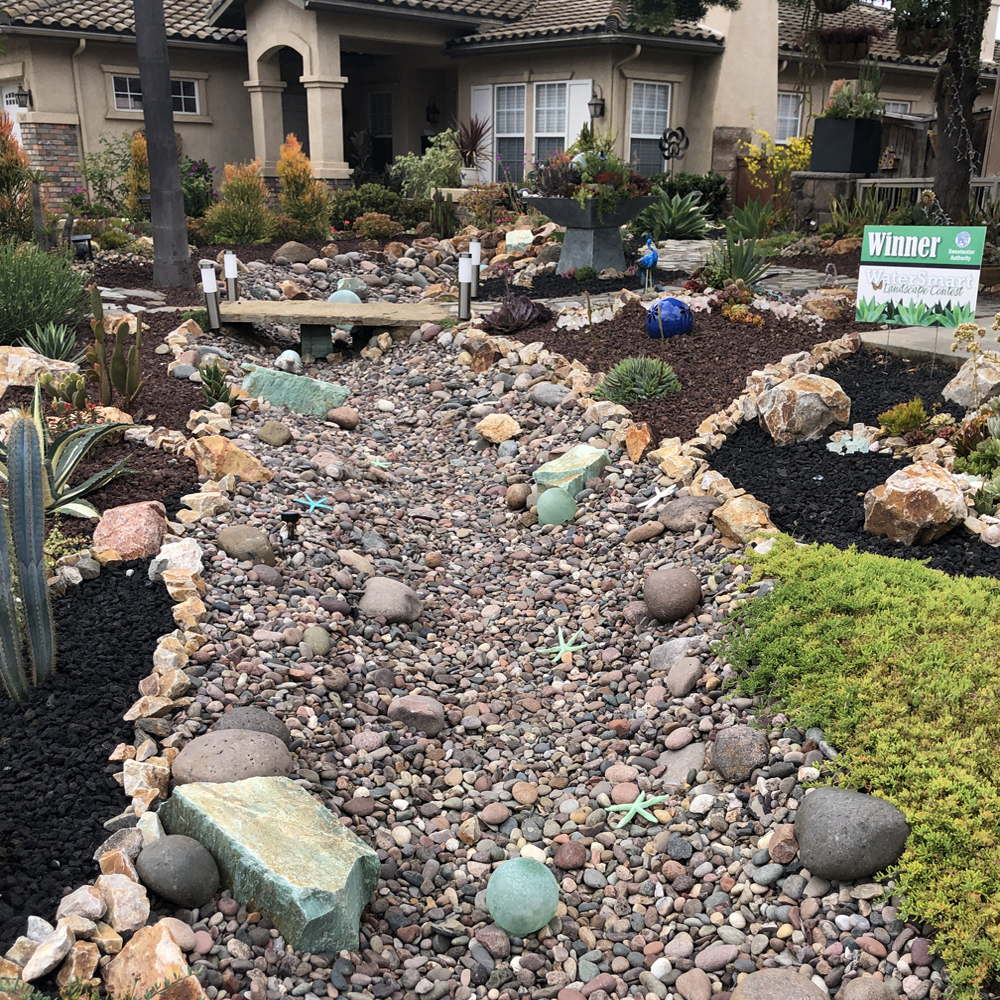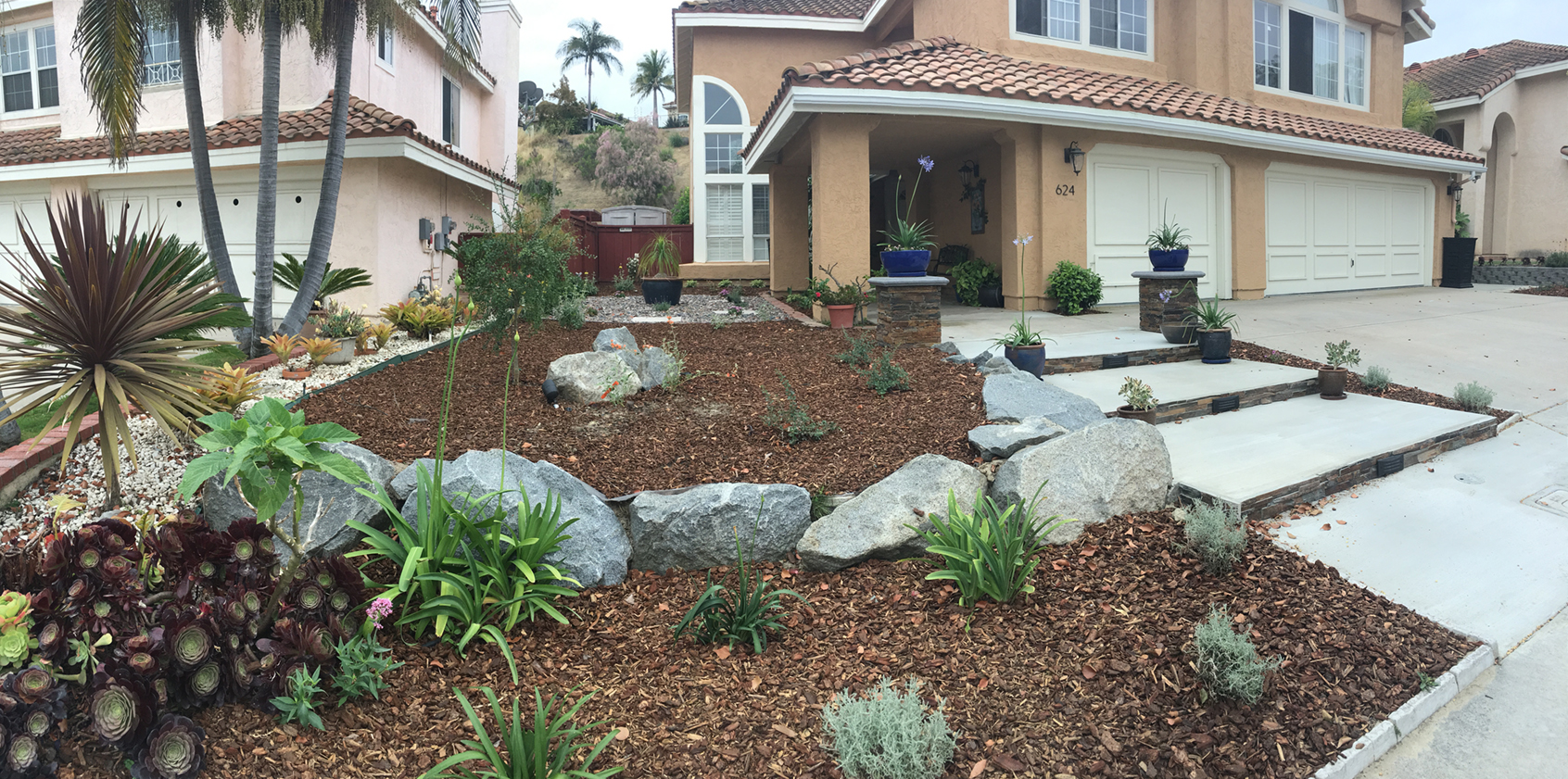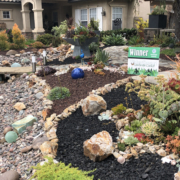Moving both irrigation and our limited natural rainfall through your yard into storage areas via the use of various landscaping features borrow Mother Nature’s engineering. This is especially important during hot, dry summer months. If your yard is perfectly flat, you must move soil and features around to create more water-retaining contour areas.
First, complete a Percolation Test. This will provide critically important information about your landscape soil’s specific capacity to drain and to absorb water. Prep your soil as needed to turn it into a water-retaining sponge as much as possible before getting to work on rainwater capture plans.
NOTE: If you are working with existing hillsides, it’s best to get professional advice before grading or other significant changes. Before any digging, call Dig Alert 8-1-1 or digalert.org
Adding basins and swales

Channels can be planted or lined with rocks and small boulders to resemble natural creek beds. Photo: Sweetwater Authority
Basins and swales are shallow depressions or channels no more than 12 to 24 inches deep, on gently sloped or nearly flat landscapes. Basins and swales move water over short distances. The plants in and around the depressions capture and sink small volumes of surface water.
Small, shallow depressions work best in clay soil areas, while sandy soils may accommodate the deeper depressions up to two feet. Channels can be planted or lined with rocks and small boulders to resemble natural creek beds.
Building berms
Berms are mounds of raised soil, usually planted, that can border basins and swales or be used alone. Berms help contain and move water around, increasing the holding capacity of basins and swales
Placing boulders

Boulders can add points of interest and slow down water runoff in your landscaping. Photo: San Diego County Water Authority
Boulders are useful to retain small berms or the edges of swales. They also create points of interest in your landscaping.
This article is part of a year-long series inspired by the 71-page Sustainable Landscapes Program guidebook. The Water Authority and its partners also offer other great resources for landscaping upgrades, including free WaterSmart classes at WaterSmartSD.org.






